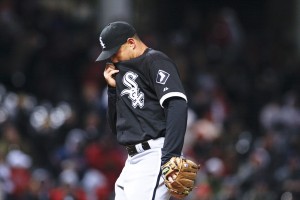Yankees scouts watched Carlos Zambrano pitch on the Cubs' recent road trip, writes Levine. Levine notes that these were not advance scouts, but rather top advisers to GM Brian Cashman. Hopefully they saw his start against the Cardinals rather than the Phillies. Levine is of the opinion Zambrano would waive his no-trade clause, as a friend of the pitcher told him earlier this month, "At this point Carlos would probably let the Cubs trade him to Siberia." As a 4.50 ERA guy in the National League with clubhouse concerns and over $28MM remaining on his contract through 2012, Zambrano would be a tough sell for any team.
Some of the Yankees top evaluators have more interest in Ryan Dempster, reports Levine, as you might expect. They'll get a look at him Saturday afternoon at Wrigley Field. Dempster has $7.7MM remaining on his contract this year, as well as a $14MM player option for 2012. He also has full no-trade rights and strong ties to Chicago.
Alfonso Soriano told Levine he expects to stay with the Cubs (he's signed through 2014), but if the team wants to trade him he wouldn't stay. Soriano, who is owed about $64MM through '14, has a full no-trade clause.
I tackled the possibility of the Cubs becoming sellers earlier this month. They're ten games out in the NL Central and the wild card.
Some of the Yankees top evaluators have more interest in Ryan Dempster, reports Levine, as you might expect. They'll get a look at him Saturday afternoon at Wrigley Field. Dempster has $7.7MM remaining on his contract this year, as well as a $14MM player option for 2012. He also has full no-trade rights and strong ties to Chicago.
Alfonso Soriano told Levine he expects to stay with the Cubs (he's signed through 2014), but if the team wants to trade him he wouldn't stay. Soriano, who is owed about $64MM through '14, has a full no-trade clause.
I tackled the possibility of the Cubs becoming sellers earlier this month. They're ten games out in the NL Central and the wild card.


Comment